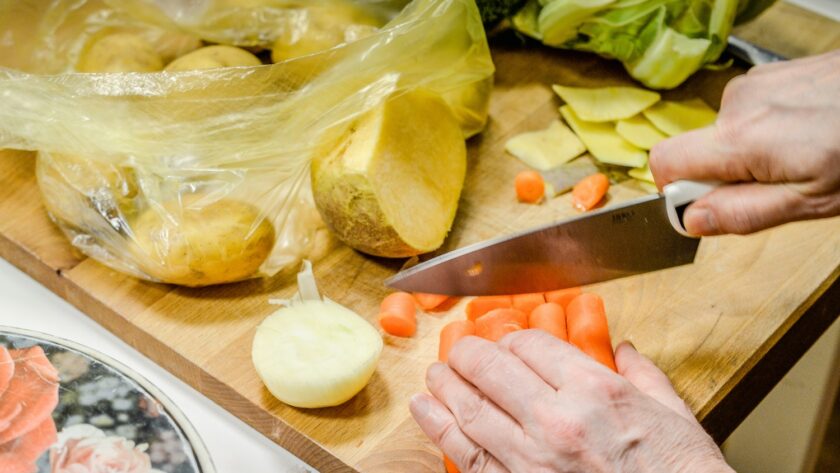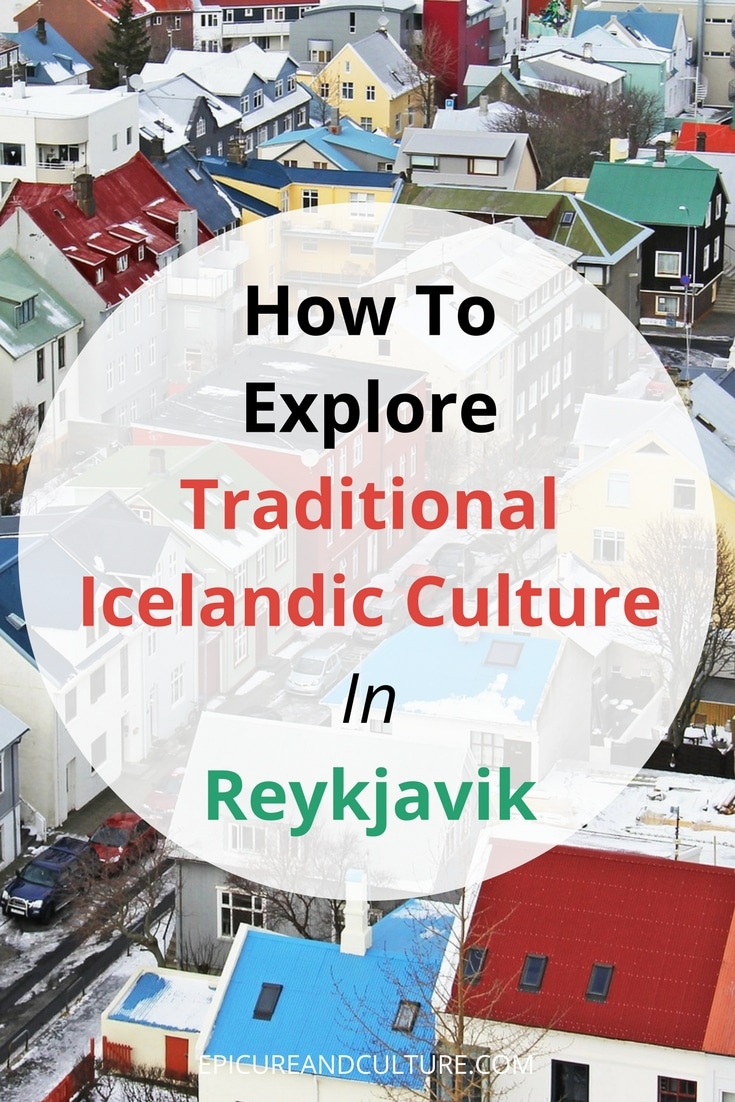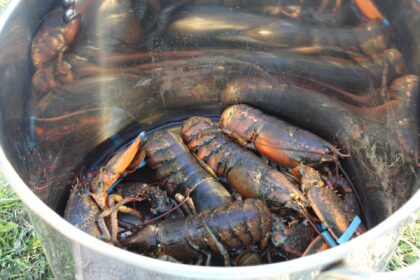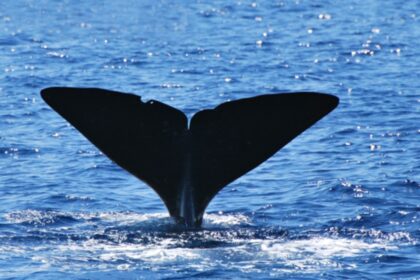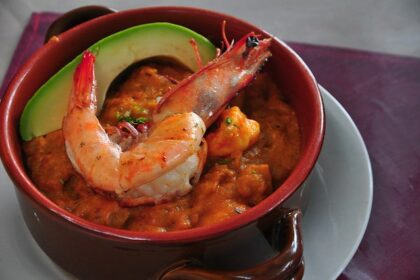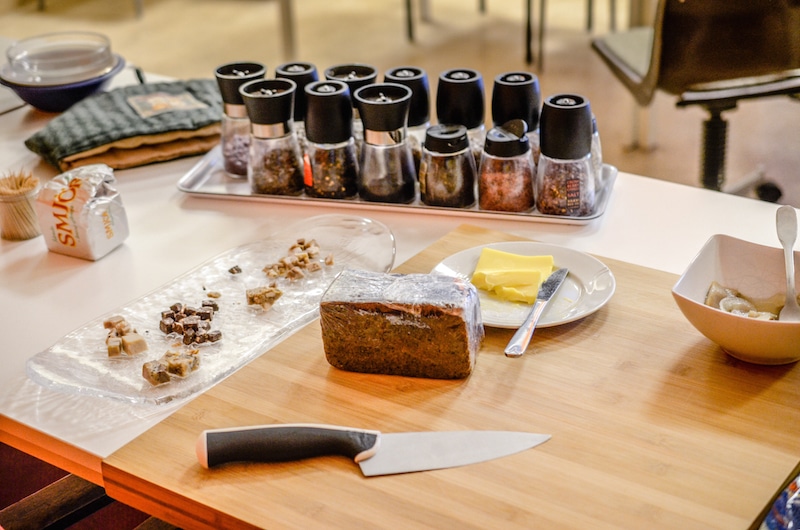
By Jessica Festa, Epicure & Culture Editor
“The history of a country’s food is often related to what the nation didn’t have.”
I’m currently at Reykjavík’s Tin Can Factory Icelandic cultural school, taking an immersive Meet The Natives class led by Gígja Svavarsdóttir. Gígja owns the school — which actually sits in a former tin can factory — with her husband Egill Gunnarsson. While the words “class” and “teacher” make it sound very formal, the truth is the three-hour experience feels much more like hanging out with locals as they share stories of their heritage and offer you their grandmother’s recipes.
Beginning with a spread that provides insight into the past. I see a brown bread with butter, chunks of what looks like different types of chocolate (it’s not), and one dish I certainly can identify without needing an explanation: a boiled sheep’s head.
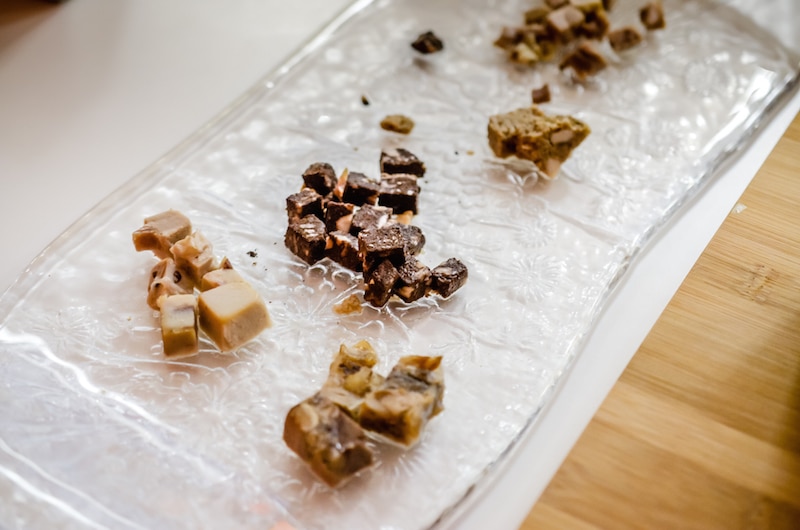
How History & Landscape Influence Food
I’m visiting during February, which is when Icelandic people celebrate their culinary heritage through the feast of Þorrablót (Thorrablot). If you’ve ever heard of Iceland’s more, umm, unappetizing-sounding dishes like sour ram’s testicles and blood pudding, this is when the locals feast on them. While it may sound gross, it’s actually a beautiful festival stemming from a time when long, dark, icy winters meant people had to pickle and ferment leftover bits to survive. Today, Icelanders eat them to pay remembrance, and to be thankful for the abundance of choice they now have.
Each dish presented on the table at the Tin Can Factory has a reason. This starts with the delicious bread called rúgbrauð, buried underground and baked by geyser steam.
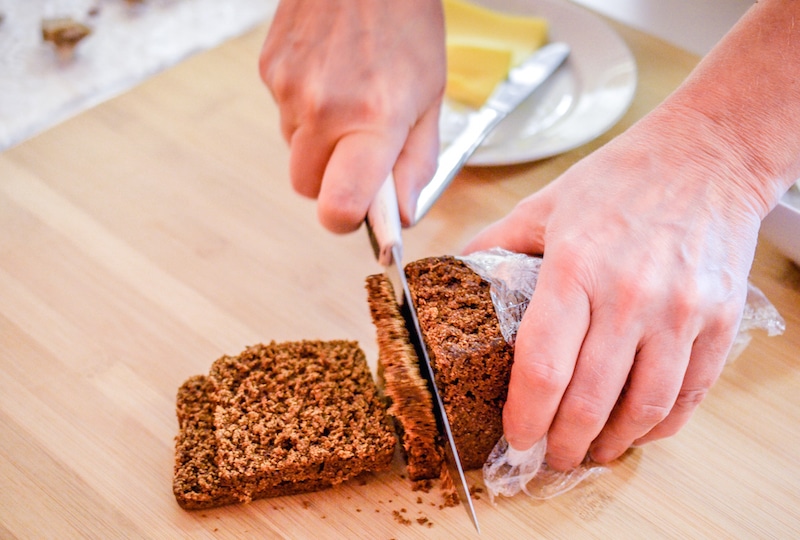
Iceland’s history with volcanic eruptions has also affected what people ate. In 1875 a massive eruption from Askja covered the land with ash and killed much of the livestock. This put farmers out of work, and 40% of the population moved away. These people took with them a lot of knowledge about plants. In fact, it’s a relatively new concept to eat plants. One important piece of flora for eating today is Angelica, known for saving many lives during the 15th century Plague. Roasted, sprinkled with garlic and placed atop buttered rúgbrauð, it’s a carb you can certainly feel good about.
What we try next is certainly not something I’d normally opt for over orange juice, though Gígja notes its their version of fruit juice, whey. For a long time Iceland had no trees for fire, which were needed to extract salt from the sea. That is why they would store their meat in whey, to ensure there was food until the next time they were able to slaughter an animal. In remembrance of this, Þórrablót’s foods are stored “the old way,” just as the vikings did.
Today they have salt, as well as whey, which is what Þorrablót’s festival meats are stored in. This gives them an intense salty, sour taste.
The beautiful story behind #Iceland's 'gross' #foods Click To Tweet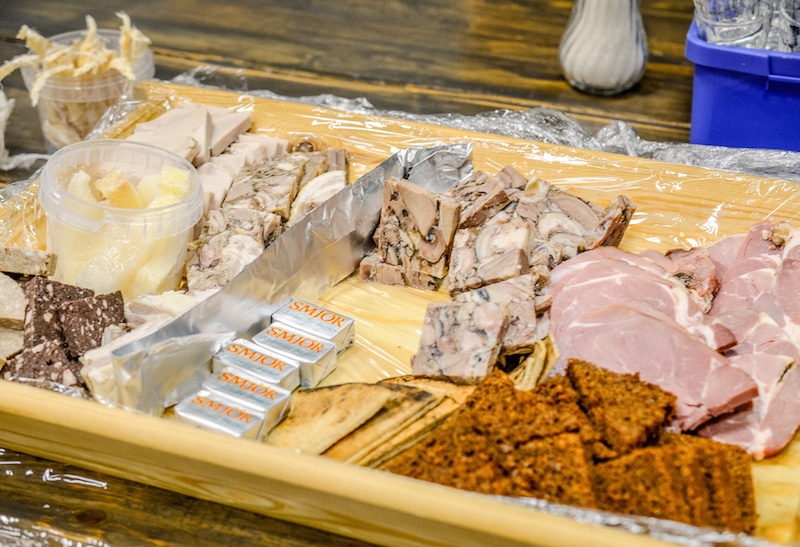
“We use old recipes like lamb’s blood pudding (blóðmöb), fermented Greenland shark (Kæstur hákarl) and lamb testicles (súrsaðir hrútspungar), stored for nine months,” explains Gígja. The shark is the hardest for me to get down, both because of the sharp ammonia taste and the smell.
Beer Paired With…Shark?
Interestingly, Greenland shark meat is poisonous to humans if not prepared in the correct way. The preparation method was devised by the vikings, which entailed beheading and burying the shark for two-to-three months. From there it’s cut into strips and hung out to air dry for a similar amount of time.
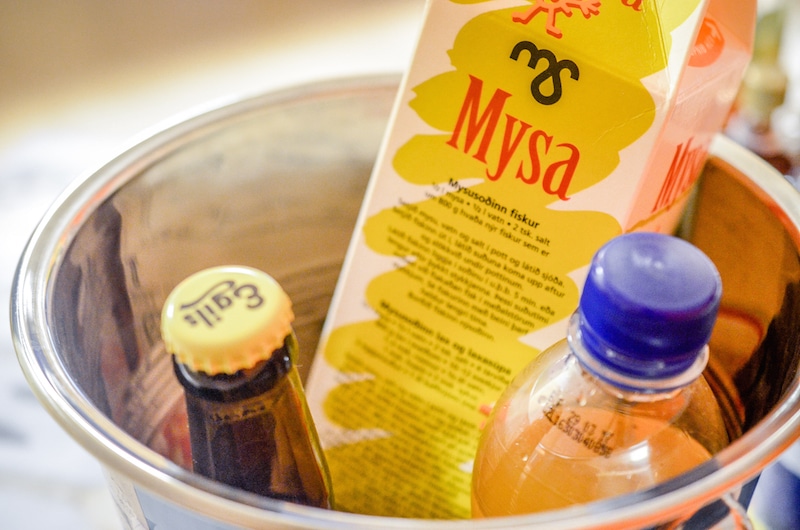
To wash the meal down Gígja provides me two Icelandic beers. One is Viking’s Vienna-style classic lager from Akureyri, located just south of the Arctic Circle. The other is Ölvisholt’s Fósturlandsins Freyja, Iceland’s first Belgian-style witbier named after the Norse god of fertility. Once Gígja and I both have glasses of beer, we cheers, using the Icelandic word “skál”.
“You know where the word ‘skál’ comes from?” asks Gígja, a grin in her eyes. “The vikings used to drink out of enemy skulls.”
What’s In A Name Icelandic Word?
This is one — albeit morbid — example of how the Icelandic language takes word meanings so literally. It’s amazing how the culture has preserved their ancient language until today, changing less than any other Scandinavian language.
When I ask how locals are able to read the Sagas of Icelanders, stories about 10th and 11th century Nordic culture written in Old Norse, Gígja notes that there are some words they don’t use anymore.”This is because we live differently, the farmers use different tools and so on. Viking poetry has always been difficult to read, especially as vikings actually had a special book that helped them read and understand the poems. Kids can’t read all, but at school you learn enough to be able to read the Sagas when you are 20+.”
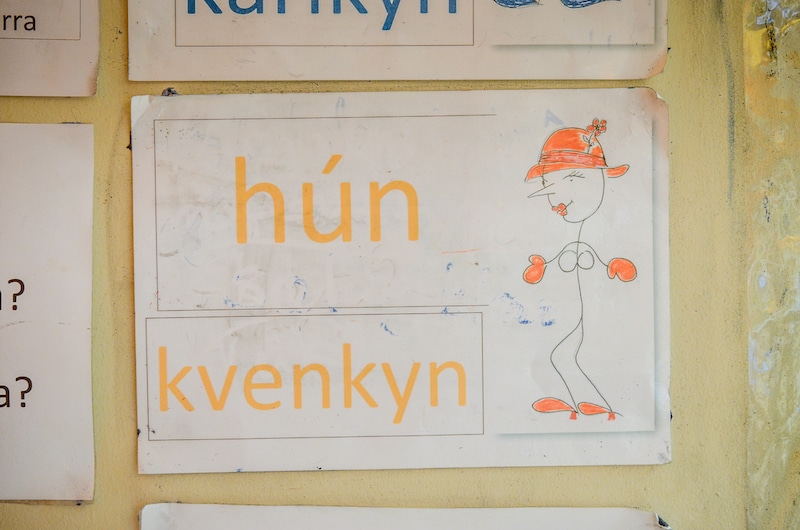
Regarding language, the Meet The Natives class teaches me why Icelandic words can be so long. It’s because all are carefully chosen to reflect the exact meaning of what’s being said. For example, “tölva” means computer and “póstur” refers to the mail. So “tölvupóstur” means “email”. Another example is “myndband”, or videotape, with “mynd” meaning photo and “band” meaning tape.
“What do you think ‘hugmynd’ means then?” quizzes Gígja. “‘Hug’ means ‘mind'”
I feel like a genius when I use deductive reasoning to come to the word “idea.” This class is seriously turning me into an Icelander.
“Icelandic words are updated through general talking among people,” explains Gígja. “We’re now trying to find an Icelandic word for ‘selfie’, but haven’t yet agreed on what would convey what’s really being said.”
Meeting My Meat
I feel even more like a local when I’m piling various parts of a boiled sheep’s head onto my plate. I’m reminded of my time eating guinea pig in Ecuador, as the dish looks exactly like what it is, unlike burgers and chicken fingers that are cut in ways as to help you forget what you’re actually eating. Instead, there’s an actual sheep smiling — okay, more like grimacing — at me.
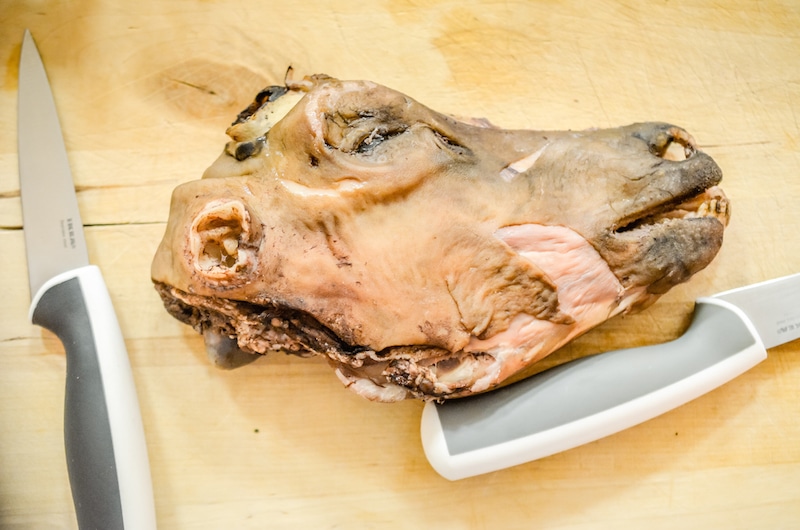
My family hunts, so this doesn’t actually bother me. And to be quite honest the inner sheep cheek — the dark meat section I’m told is considered “gourmet” — is so delicious I can’t stop eating it. What challenges my stomach is the eyeball.
“When I was younger my brother would sneak to the table after my mother had put out the sheep’s head. Then he would eat all the eyes; but when we were really good friends we were both stealing the eyes and sharing them.” Gígja laughs before quickly gobbling up her half of the eye we were splitting. I on the other hand need to count to three 10, and take only a little nibble. To be honest it doesn’t taste terrible and doesn’t have the grape texture I expected. Still, the American in me just can’t bear to gobble it down.

A Self-Service Culture
“More beer please,” I say, holding out my glass.
Which is when I learn that serving others isn’t part of the Icelandic culture. This has nothing to do with pleasantries and everything to do with locals hating to waste food and drink. Instead of over-serving guests, they let their visitors take what they please so nothing goes in the trash.
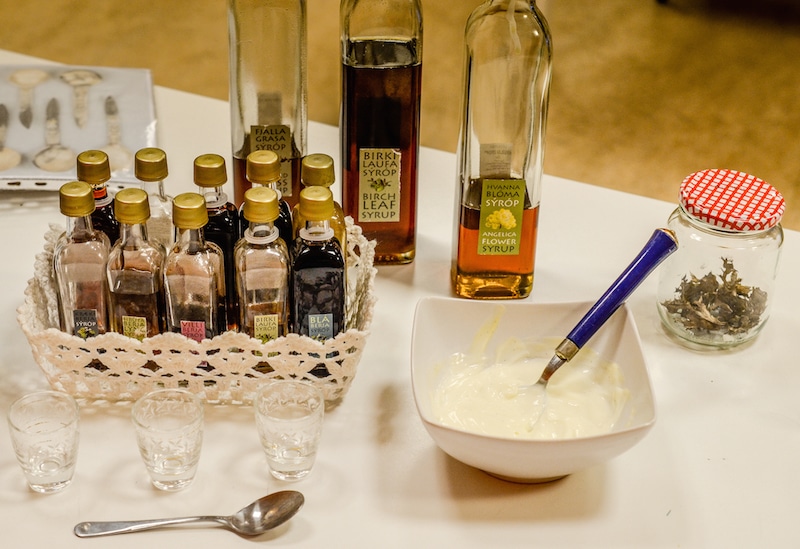
Icelandic Comfort Food
My favorite Icelandic dishes come toward the end of the class. First, a traditional Icelandic lamb soup called kjötsúpa, made by boiling tender lamb meat in a flavorful bone broth. Interestingly, the soup features the vegetables that actually grow in Iceland: potato, yellow turnip, carrots, broccoli, white cabbage and cauliflower. There are also spices including salt and bay leaf — added in the beginning — as well as chopped onion and lovage (which is like parsley).
We’re using Gígja’s grandmothers recipe, though she adds her own twist by dropping a whole garlic into the pot. This is a trick she learned while living in Italy, and turns the curative bulb into a tender sweet side dish.
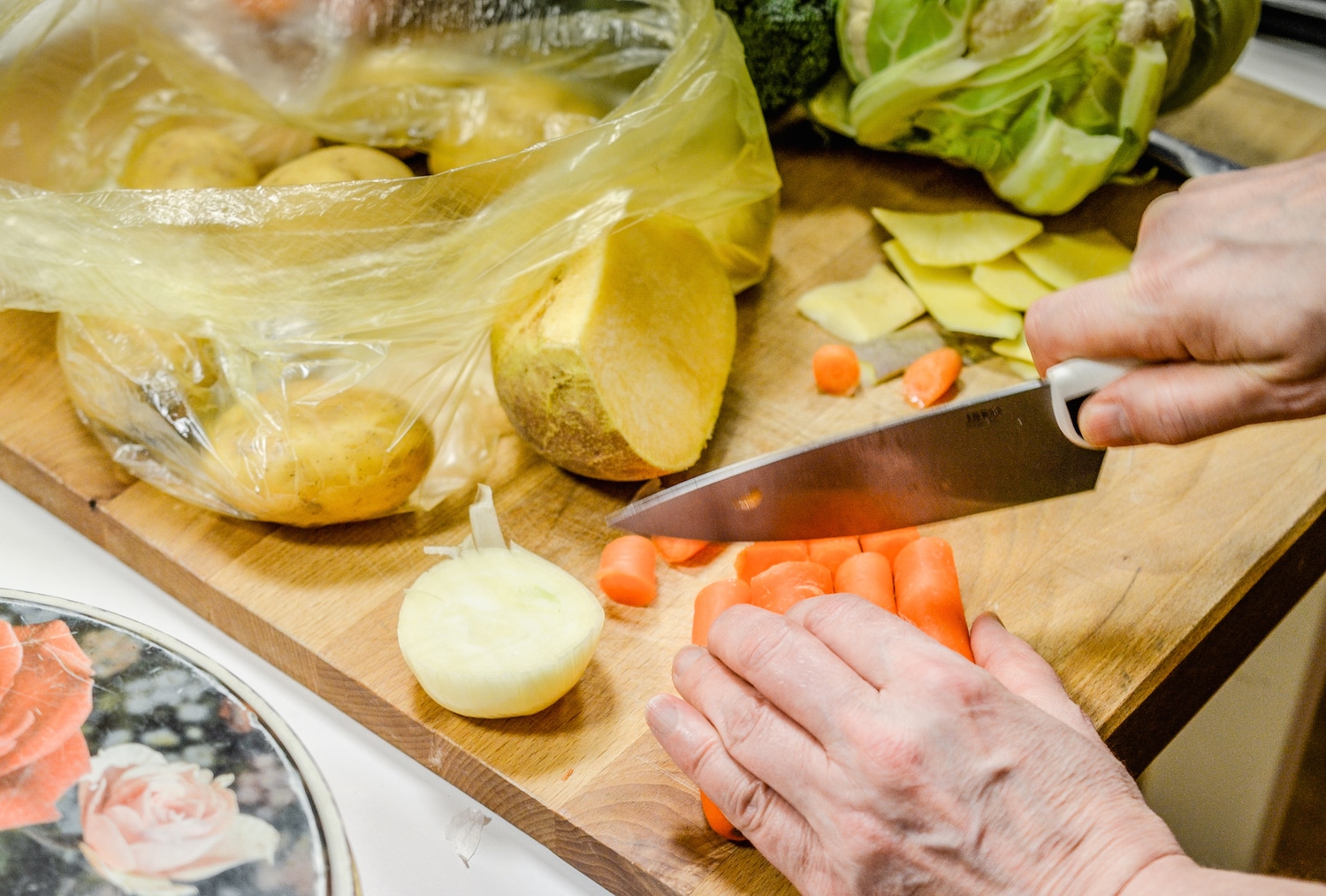
While she’s cooking Gígja cuts off a slice of white turnip and hands it to me to snack on.
“I love eating these raw with vinegar, raisins and just a bit of sugar.”
I laugh. “There are so many Icelandic food combinations I would have never thought would work. Vinegar with raisins?!”
The soup is heavenly, so much more flavorful than any of the bowls I’ve tried at various Reykjavík restaurants. Gígja notes that this is because many eateries use too many dices instead of bones, less vegetables, and skip the lovage because you need to know someone who grows it. They also often don’t let the soup simmer, or may skimp on meat quality.
“The soup is often made by people who don’t know how to make it. I know two Polish people whose job is to make Icelandic lamb soup. They don’t even eat lamb in Poland. Anyway, they asked me for help, but they couldn’t get the lovage and were told it didn’t matter. Then there are different ways of doing it, and some recipes are not good,” she says with a smirk.
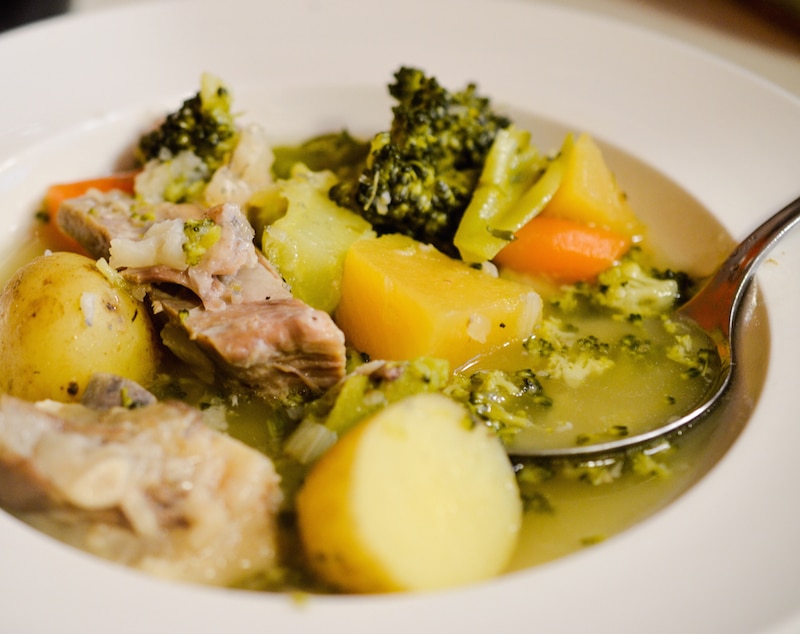
Using Pancakes To Show Wealth
To end the food portion of Meet The Natives, we savor what I would typically consider a breakfast food but Icelanders eat as a dessert: pönnukökur, or Icelandic pancakes. While in the USA pancakes tend to be thick and fluffy, in Iceland the goal is to make them almost paper-thin. Here I get to help, spreading the batter into a thin layer on the pan.
“It’s better for it to have a hole than to be too thick,” explains Gígja. “You’ll see why later.”
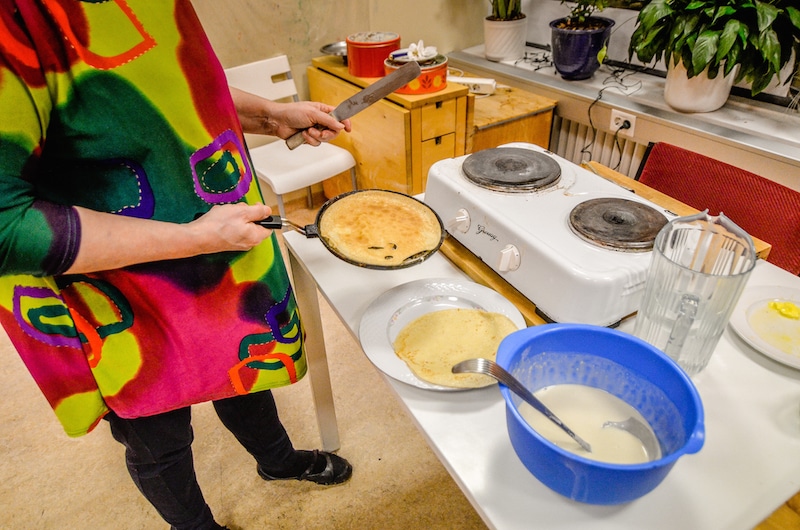
While my pancakes do indeed have holes, I’m pretty proud of my creations, especially when I get better at flipping them. If they don’t flip exactly onto the pan you’re allowed to “tickle them but not touch them,” meaning I can gently nudge the flapjack back onto the pan with my finger tips.
Once our stack is complete we head over to the table, where jars of homemade rhubarb jam (traditionally used by the poor) and red currant (traditionally used by the rich) sit. I’m instructed to spread my jam of choice on one side of the pancake and then plop a large scoop of cream in the center. From there, the pancake is folded in half, and then in half again, so that it looks beautiful and fat.
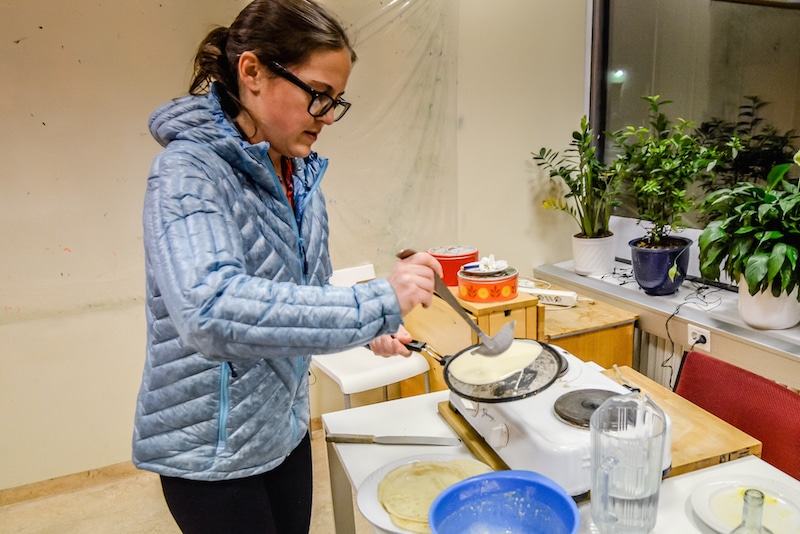
“If it looks chubby everyone will think you’re rich,” laughs Gígja. “Traditionally cream was expensive, and Icelanders exported butter; but, it was important that when you served the pancakes it looked like you had a lot of it. If the pancakes are chubby, then you are a really good host!”
It’s also important to press your fork down the middle of the pancake. From there you eat from the triangular fold toward the corner to spread the filling perfectly. It’s so delicious with the rhubarb I dig into another with red currant, despite the fact my waistband is feeling more than a little tight. Hey, this is a class after all, and eating is part of the certification.
Eating in #Iceland is like reading the story of its past. Here's why. #culture Click To Tweet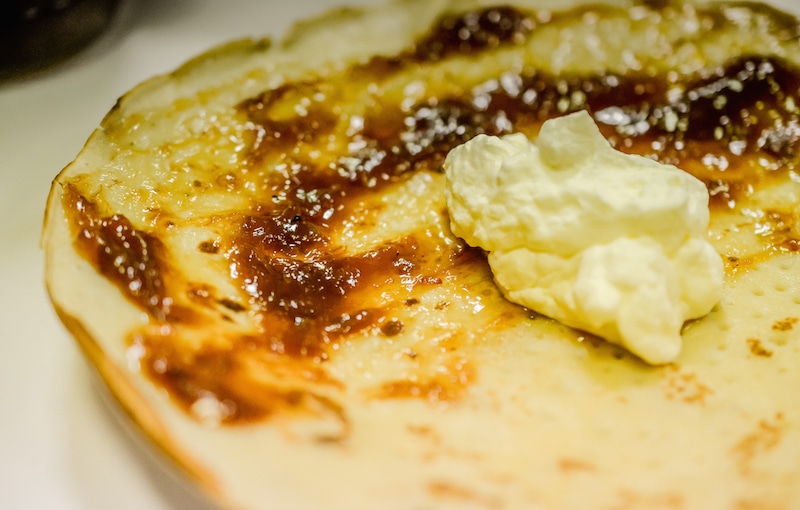
Iceland’s Fascinating History
In all seriousness Meet The Natives is a class, and beyond cooking and a language lesson we spend an hour discussing Iceland’s proud heritage. I learn so much in such a short time, from Iceland being Christianized by Norway in 999 but still able to worship pagan gods behind closed doors, to the fact that locals don’t have surnames. Instead they use their father’s (or sometimes mother’s) name followed by “dóttir” or daughter (of) or “son,” son (of). They also had the world’s first female president, Vigdís Finnbogadóttir, elected in 1980.
“The woman-movement was very strong at that time,” explains Gígja. “Icelanders weren’t really thinking about having the world’s first female president; just that she was strong and educated. It was often difficult for her. She was questioned about her breast cancer, being asked ‘How can a woman with only one breast be the president of Iceland?’ Her answer: she didn’t intend to breast feed the Icelandic nation. The people loved her humor. This opened a lot of doors for women here.”
The most interesting aspect of the culture to me, like many visitors, is their amazing preservation of folklore. Maybe it’s the harsh natural elements the people must deal with, but Icelanders are resilient. Their language is just one example. Something else that fascinates outsiders is their belief in trolls, elves and hidden beings. In fact, much of Iceland’s road work is planned around not displacing elves. Gígja even tells me about a very intelligent woman who used to exchange recipes with an “elf lady.”
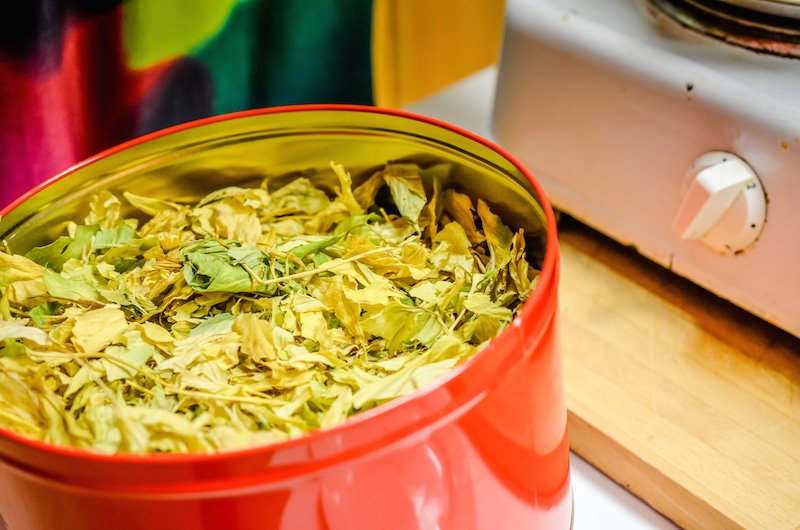
“This woman would pick herbs with me. She would always tell me take 1/3 for yourself and leave 1/3 for next year and 1/3 for the elves. Our belief in elves helps us respect nature. You can’t take it all. We remember we are part of the environment. The trolls teach us not to play with nature, because it is stronger than us.”
By the end of the class I’m full of delicious food, knowledge and a solid introduction to Iceland culture. I feel less like an outsider, and more like a visitor with an understanding of the country. In fact, I even get a diploma adorned with my Icelandic name: Jessika Urdar-og Jónsdóttir. You see, I told you I was turning Icelandic.
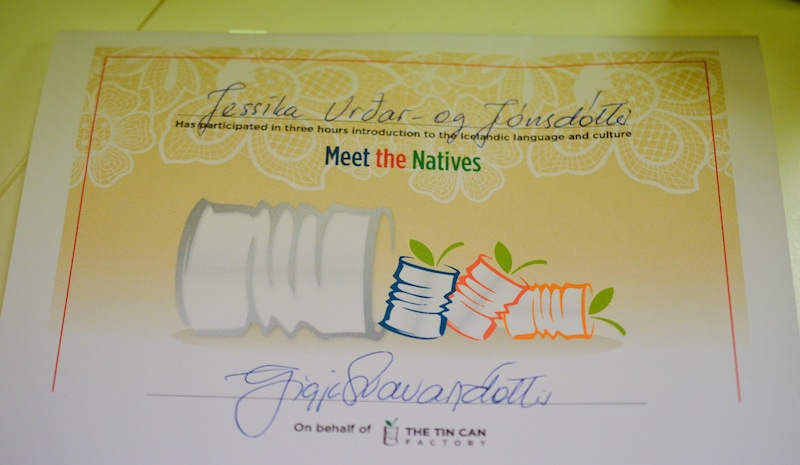
How do you recommend exploring Iceland culture when visiting the country? Please share in the comments below!
Logistics:
The Tin Can Factory: Meet The Natives
Borgartun 1, Reykjavik
+354 551 7700
Price: 12,900 ISK (~$114 USD)
When: Daily from 1pm to 4pm, and 6pm to 9pm
Stay: The ODDSSON Ho(s)tel. I absolutely loved this hostel and hotel, which caters to both budget backpackers and the older budget traveler. On the fourth floor you’ll find a self-catering kitchen, free-to-use yoga room (with the occasional complimentary class), terrace lounge and outdoor hot tub. The first floor, on the other hand, has more of a hotel feel with a gorgeous restaurant, “yoga food” cafe, work areas with communal tables and plush couches, and free bike rentals. What’s awesome is both my dorm and my hotel room had gorgeous views of Faxaflói Bay and the Esja, Akrafjall and Skarðsheiði Mountains. Rates: ~$33-$50 USD for a 12-bedroom dorm and ~$225-$385 USD for the private hotel room. Use code “JESSIEONAJOURNEY” for 10% off your stay!
Packing Essentials: A few items that kept me warm and dry during my winter trip in Iceland include my BUFF multi-use scarf, Merino Wool Hiking Socks, a waterproof coat and ProShot waterproof iPhone housing.
Jessica Festa
Latest posts by Jessica Festa (see all)
- A Culturally-Immersive Adventure In Mongolia’s Altai Mountains - Jul 8, 2023
- This Recipe Sharing Platform Supports Women In The Culinary Industry (Labneh Recipe Included!) - Nov 5, 2020
- Hiking The Mohare Danda Community Eco-Trek In Nepal - Jun 3, 2020
- 6 Important Questions For Choosing A Responsible Yoga Retreat - May 18, 2020
- How To Create & Grow A Profitable Blogging Business (Ethically) - Jan 18, 2020

